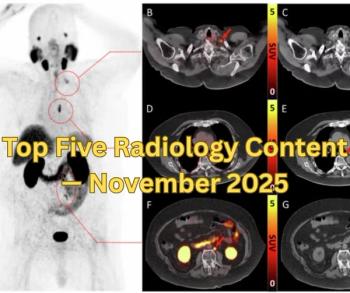
MRI Effective in Assessing Abnormal Femoral Antetorsion, or In-Toeing
MRI is effective in measuring abnormal femoral antetorsion, or in-toeing, and the images can then be used in treatment planning for patients with femoroacetabular impingement.
MRI is effective in measuring abnormal femoral antetorsion, or in-toeing, with good reproducibility. The images can then be used in treatment planning for patients with femoroacetabular impingement, according to researchers from Orthopedic University Hospital Balgrist in Zurich, Switzerland.
In the study published online March 8 in the journal
Researchers found that the MRI assessments could be made in approximately 80 seconds; both readers had the same value and the different MRIs had similar findings.
Patients with pincer-type FAI, which occurs when the acetabulum has too much covering of the femoral head, had significantly higher femoral antetorsion than did patients with cam-type FAI, which is characterized by abnormalities in the femoral head and neck.
This study’s findings could make it useful for orthopedic surgeons to know what angle is present before performing osteochondroplasty of the proximal femur and acetabular rim section in patients with FAI, the researchers wrote. “However, on the basis of the wide range of femoral antetorsion angles we found in the population of volunteers, there is no single cutoff value that separates a normal versus abnormal antetorsion.”
Newsletter
Stay at the forefront of radiology with the Diagnostic Imaging newsletter, delivering the latest news, clinical insights, and imaging advancements for today’s radiologists.


























